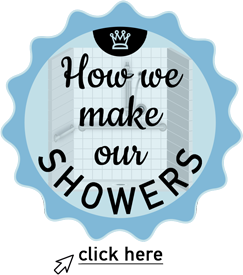1.General Information
[accordion clicktoclose=true tag=h6]
[accordion-item title=”Our bathroom is small and is an irregular shape. Can you help us?”]
ORCA HealthCare has over 400 shower and bathtub models to choose from, and accent color options are limited only by your imagination. In addition, we offer custom solutions to meet your unique requirements. Please contact ORCA HealthCare to discuss your specific project.
[/accordion-item]
[/accordion]
[accordion clicktoclose=true tag=h6]
[accordion-item title=”Is a composite shower durable enough for a growing family?”]
All our products are built to withstand heavy use. We work with only the highest quality materials when building our shower and bathing units, including laminate wood reinforced walls and extremely hardwearing gelcoat finishes. Our products are specifically designed to be easy to clean, maintain and repair. The superior quality of our products is demonstrated by the industry-leading 30-year limited warranty on all our showers.
[/accordion-item]
[/accordion]
[accordion clicktoclose=true tag=h6]
[accordion-item title=”Can grab bars and shower seats be installed in my shower?”]
Yes. All Best Bath shower units feature laminate wood core walls, meaning grab bars can be installed anywhere on the shower wall using screws. There is no need for any additional structural backing or studs.Shower seats can also be installed in the shower, providing they have swing-down legs to transfer the weight to the floor. Note that cantilever-type seats are not suitable for these showers.
[/accordion-item]
[/accordion]
[accordion clicktoclose=true tag=h6]
[accordion-item title=”How do I prevent water leaking out of my low threshold or roll-in shower?”]
If your unit does not have shower doors, you can use a weighted shower curtain in combination with a WaterStopper, a clever collapsible rubber water dam that is fitted on the floor along the shower opening. This collapsible threshold ensures the unit is still wheelchair accessible, yet immediately springs back to an upright position to prevent water leaking out of the unit.
[/accordion-item]
[/accordion]
[accordion clicktoclose=true tag=h6]
[accordion-item title=”Why do you use a gelcoat finish instead of acrylic?”]
Both gelcoat and acrylic are excellent finishes for bathroom fixtures. They have similar properties, and are both resin-based plastic materials. The main difference is that acrylic is supplied in sheet form, while gelcoat is liquid.
Acrylic is applied to shower walls using a process called vacuum molding, where it is heated, stretched and formed to a mold. During application, the edge of the acrylic sheet maintains its purchased thickness. When acrylic is heated and stretched, the bottom of the tub becomes thinner, which is why a shade difference is often visible on the floor or bowl/floor corner. The deeper the unit, the thinner the material of the primary wear surface, which has to cope with both the weight of the user and water drainage.
All plastic products want to change shape because of the plastic’s memory, and, as acrylic is a thermo forming plastic, it softens as it heats up and can be reformed. Our experience with acrylic is that there is a tendency for the product to be less dimensionally stable.
Gelcoat is applied to a mold using a spray process called “open contact molding”. When applied by a skilled technician, gelcoat results in a very uniform and consistently thick finish. Gelcoat is a thermoset product, meaning it maintains its shape once it is sprayed and cured.
When a gelcoat finish is repaired correctly, the repair becomes a permanent chemical bond. In contrast, acrylic repairs are carried out using patches that can fail. They are also prone to discoloration or mechanical bond releases.
Best Bath only uses gelcoat, which supports the decision to provide an industry-leading 30-year limited warranty.
[/accordion-item]
[/accordion]
[accordion clicktoclose=true tag=h6]
[accordion-item title=”Safety is important, but we still want our bathroom to look good. Will we have to choose between safety and beauty?”]
We at ORCA HealthCare believe everyone should be able to have a safe, accessible, and durable bathroom without compromising on style. Showers are available in a variety of simulated tile or smooth finishes, and in up to five different base colors, along with countless combinations of color accents. In addition, we now offer Designer Series showers with real tile or stone accents inlayed into the gelcoat walls. With over 400 models on offer, we are certain you will find a shower or tub that suits your style as well as your practical requirements.
[/accordion-item]
[/accordion]
2. Installation and Start-Up
[accordion clicktoclose=true tag=h6]
[accordion-item title=”Why are there wood blocks under my shower or tub? May I remove them?”]
The wood blocks under the shower and tub/shower units prevent the bottom of the unit resting on the ground during shipping and storage. They must be removed for proper installation of the unit.
[/accordion-item]
[/accordion]
[accordion clicktoclose=true tag=h6]
[accordion-item title=”Is the shower unit supplied with pre-cut holes? How can I cut additional holes?”]
Your new walk-in shower will be supplied with a single hole, for the drain. Tubs and tub/showers are supplied with a drain hole and an overflow hole unless otherwise specified. A hole saw, preferably a carbide hole saw, is recommended for cutting holes for plumbing fixtures. Alternatively, a fine-toothed sharp saw will also work. The hole should be cut from the finished side out, using masking tape over the gelcoat if necessary to minimize the risk of chipping.
[/accordion-item]
[/accordion]
[accordion clicktoclose=true tag=h6]
[accordion-item title=”When I set my shower stall tub/shower into the alcove, the unit tilts backwards. Is there supposed to be a void under the unit?”]
When installing the unit, the only portion that should touch the floor when the unit is leveled is the front threshold or apron and the rear leveling block(s). There will be a void underneath the unit for drain clearance purposes. Leaving a void under the unit is acceptable as the unit has been tested to three hundred pounds (ANSI Standard Z124.1 & 2). If desired, the unit can be set in wet cement or mortar to eliminate the void. Please note that this does not apply to most accessible shower models.
[/accordion-item]
[/accordion]
[accordion clicktoclose=true tag=h6]
[accordion-item title=”May I remove a section of the shower wall to accommodate an existing window?”]
Yes. Because of the structural integrity of the walls, it is possible to cut out portions to accommodate windows. To cut the window opening out of your shower, use a carbide tip saw (recommended), a standard circular saw or a reciprocating saw with a fine tooth blade. Applying masking tape over the gelcoat will minimize the risk of chipping. Note that window trim kits are available for finishing your window.
[/accordion-item]
[/accordion]
[accordion clicktoclose=true tag=h6]
[accordion-item title=”Does my barrier-free shower need to be recessed into the floor? What should I do if I’ve already installed it on top of the floor?”]
Best Bath showers are available as non-recessing, non-mud set units. If the shower is located in a public or commercial facility, you should check the local and state ADA codes for public facilities to see if non-recessed installation is acceptable.ADA codes do not typically apply to private residences. Therefore, in a private home, the unit can be installed on top of the floor if desired. If wheelchair access is required, the bathroom floor can be built up to the shower to provide a ramp.
[/accordion-item]
[/accordion]
[accordion clicktoclose=true tag=h6]
[accordion-item title=”Do I need to have access to the backside of my shower for my remodeling project in order to install it?”]
No. Residential Remodel multi-piece showers are designed with a front-installation SnapJoint wall assembly system
[/accordion-item]
[/accordion]
3. Cleaning Tips
[accordion clicktoclose=true tag=h6]
[accordion-item title=”How do I remove adhesive left over from the labels that were on the unit?”]
Acetone, WD40, nail polish remover, or mineral spirits can all be used on a soft cloth or cotton ball. Finish by wiping the area with a non-abrasive cleaner before rinsing.
[/accordion-item]
[/accordion]
[accordion clicktoclose=true tag=h6]
[accordion-item title=”What cleaners do you recommend to clean my Best Bath unit?”]
Any off-the-shelf non-abrasive liquid cleaners can be used, providing you read the label and follow the recommendations. Do not use harsh abrasives like Comet, Ajax, Bon Ami, etc. as they will harm your shower or tub and dull the finish.
[/accordion-item]
[/accordion]
[accordion clicktoclose=true tag=h6]
[accordion-item title=”I’m struggling to clean the anti-skid floor with my standard liquid cleanser. What do you recommend?”]
Try using C.L.R., Kaboom, or Simple Green, following the instructions on the label.
[/accordion-item]
[/accordion]
[accordion clicktoclose=true tag=h6]
[accordion-item title=”What do you recommend to remove stubborn marks, such as water stains, calcium deposits, lime scale or soap scum, from my unit?”]
Simple Green Lime Scale Remover, Lime-Away, or C.L.R. will all work well. Applying automotive paste wax twice a year to the walls provides the best results, not only making it easier to clean your shower, but also preventing dirt buildup. Follow the product manufacturer’s directions, including the use of a mechanical buffer. For safety reasons, DO NOT use wax on shower or tub floors.
[/accordion-item]
[/accordion]
[accordion clicktoclose=true tag=h6]
[accordion-item title=”What is the best way to wash my heavy weighted shower curtain?”]
Use neutral soapsuds and lukewarm water, then rinse with clean water and allow the fabric to dry. For stubborn dirt, use a standard household/vinyl cleanser and/or a soft bristle brush. Heavy stains may benefit from soaking beforehand. DO NOT use harsh cleansers or solvents to clean the curtain.We do not recommend putting your shower curtain in a washing machine, as this can substantially decrease the useful life of the fabric. However, if laundering is required, follow these guidelines from the International Fabric Care Institute:
- Wash and rinse according to the “Synthetic Washing Procedure for Coated Fabrics” with temperatures not exceeding 100° F.
- Extract water with centrifugal extractor.
- Tumble dry in a steam dryer (not gas) at 120° F maximum. For tailored, precise fitted items, tumble dry without heat or air dry. DO NOT IRON.
[/accordion-item]
[/accordion]
4. Jetted Walk-in Tubs
[accordion clicktoclose=true tag=h6]
[accordion-item title=”The jets in my walk-in tub are not working, or one is more powerful than another. What should I do?”]
Try gently rotating the outside escutcheon of the jet clockwise to open the jet, or turn it counterclockwise to reduce the flow of water.
[/accordion-item]
[/accordion]
[accordion clicktoclose=true tag=h6]
[accordion-item title=”Do I really need an access panel for my bathtub? What will happen if I don’t provide one? Can I have an access panel on an outside wall?”]
An access panel is required by plumbing code so that the tub whirlpool components may be serviced. If you choose to purchase a tub without an access panel, you will need to make a hole in the closest wall. You may have an access panel on an outside wall as long as all local and state building codes are followed.
[/accordion-item]
[/accordion]
[accordion clicktoclose=true tag=h6]
[accordion-item title=”Can I install an in-line heater on my walk-in tub after purchase?”]
No. You would void the warranty on the jetting system, and it would violate the electrical listing to the U.L. Standard.
[/accordion-item]
[/accordion]
[accordion clicktoclose=true tag=h6]
[accordion-item title=”What are the electrical requirements for installing a jetted walk-in tub?”]
A dedicated 110v/120v 15 amp G.F.C.I. protected circuit is required for your tub. If you have both jet system options, an additional dedicated 110v/120v 15 amp, G.F.C.I. protected circuit is required.
[/accordion-item]
[/accordion]
5. Warranty Information
[accordion clicktoclose=true tag=h6]
[accordion-item title=”What is the warranty of my new shower or walk-in tub?”]
All manufacturer’s defects are warranted for 30 years from purchase date for the fiberglass shell. Any accessories or jetting parts are subject to the manufacturer’s warranty. All walk-in tub door seals feature a Limited Lifetime warranty.
[/accordion-item]
[/accordion]
[accordion clicktoclose=true tag=h6]
[accordion-item title=”Does using a rubber mat in my shower affect the warranty?”]
If you use a rubber mat, you must remove it after every use, and completely dry both the mat and the gelcoat surface. Otherwise, using a rubber mat does void the bathing fixture warranty.
[/accordion-item]
[/accordion]
[accordion clicktoclose=true tag=h6]
[accordion-item title=”What is the life expectancy of a gelcoat unit?”]
The life expectancy of a gelcoat shower unit depends on well how the product is cared for. However, industry-wide, the life expectancy is approximately 30 years.
[/accordion-item]
[/accordion]


